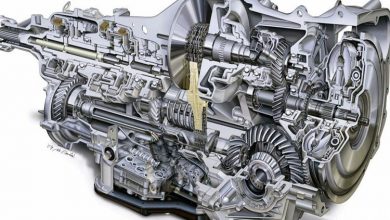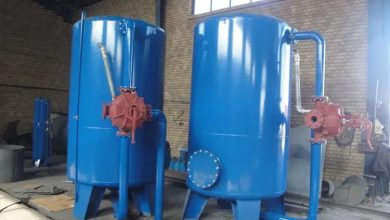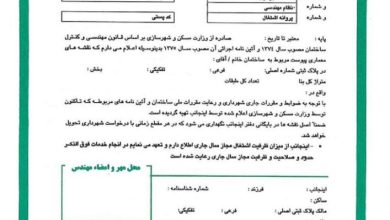For about 50 years now, prestressed concrete roofs have been used for various purposes in the construction and execution of buildings, bridges, etc. The main reason for using this method is the problems that arise when using steel. Things like: increasing the rate of raw materials for making steel, gradual wear of iron due to corrosion, unstable ductility of steel, etc.
Pre-tensioned ceiling in a forward and backward manner
Pre-tensioned roof construction by pre-tensioning method: first, the steel cables are stretched and fixed at the two ends of the concrete parts using special clamps, and then the concrete pouring process is done.
Pre-tensioned roof construction by the retraction method: First, the cables are passed through the hollow sheaths, so that both ends of the cables protrude from the sheaths. Finally, the pouring of concrete begins.
The process of making extruded concrete is carried out in different ways, such as: adhesive and non-adhesive. These methods are as follows:
Sticking method: Through this method, the drawn cables are passed through small galvanized sheaths, and after unloading the concrete and pulling the cables, the gaps and empty parts are filled with grout.
Non-Adhesive Method: There is no need to use plaster in the construction of structures that use the non-adhesive method. Because most of the cables in the sheaths will get covered in grease. Immediately after pouring the concrete and increasing the required compressive strength, the cables are pulled with the help of small winches.

Stretched ceiling applications
Prestressed ceilings are used in a wide variety of structures, the most notable of which are:
- Hospitals
- Multi-storey car parking
- Sidewalks and bridges
- Towers and large and tall buildings
- Large commercial buildings and corridors
- And the…
What are the disadvantages of a prestressed ceiling?
In this article, as well as in the previous ones, we talked a lot about the advantages and features of prestressed ceilings. But it is worth noting that this method, in addition to its many advantages, can sometimes cause problems with its use.
You surely know that a number of cables are used in the construction and implementation of pre-tensioned ceilings, which may lead to many risks if these surfaces need to be destroyed. For this reason, special techniques and the use of experts and professionals should not be neglected during demolition.
Another problem and disadvantage of using prestressed ceilings is the reduction or loosening of the cables, which is caused by various things such as: loosening of the steel, reduced friction between the sheaths and cables, and melting of the concrete materials. , mixing concrete materials, etc.
In recent years, pre-tensioned roofs have become one of the most popular roofs in the construction industry. These types of structures were widely used initially to build all kinds of bridges.
Because over time, due to the problems caused by the use of various metal frames in the construction and implementation of buildings, pre-stressed roofs were replaced, which were much better in terms of quality and even in economic terms, and steel skeletons were used in buildings and all kinds of metal structures.
Concept of stress in concrete ceilings
Pay attention to the fact that prestressing in concrete surfaces includes various things such as: creating permanent and completely permanent tension in concrete parts, of course, to the extent required, so that due to the creation of this tension, the stresses taken from the dead and live load which will cause cracks in the concrete, are neutralized And also to increase the bearing strength of the roof.
Attia Fairuz Iranian International Development Company
Professional and specialized group AFID Which is the official representative of APS in Iran, with the aim of growth and development in the field of post-tensioning and pre-tensioning technology for building and construction structures.
For more information, please contact our experts and consultants.










